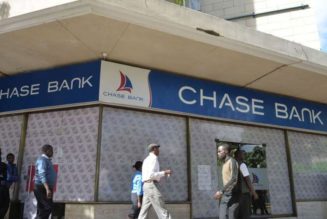
NCBA Bank Kenya has beaten its top rivals, including KCB Bank Kenya and Equity Bank Kenya, to hold the largest number of high-value accounts with deposits of more than Sh100,000 at the end of last December.
The latest bank supervision report shows that NCBA’s high-net-worth accounts more than doubled to 416,481 in the review period, ranking it first in the number of wealthy clients.
The bank had 146,396 such accounts a year earlier. Equity, which previously was in the pole position with 419,736 accounts, registered a substantial shrinkage in high-value clients to leave it with 124,098 accounts in the review period when it ranked second.
KCB’s accounts also fell to 113,368 from 330,484, a move that saw it drop from second to third place. High-value accounts at Co-operative Bank of Kenya similarly plummeted to 86,033 from 280,128, ranking the lender fourth from the previous third position.
Most institutions recorded substantial losses of high-value accounts, with NCBA bucking the trend to post the largest gains. Local banks lost a total of 736,845 such accounts to 1,110,232, marking a 10-year low and one of the biggest contraction in a single year.
The decline in the number of high-value accounts signals a mix of a shift to alternative assets such as Treasury bills as well as economic headwinds that affected a section of businesses and households.
Last year was characterised by high inflation rates and higher taxation that eroded households’ purchasing power and hurt corporate earnings in various sectors, including manufacturing and services.
A large base of high-net-worth clients helps a bank fund its lending business, besides opening an opportunity to offer additional services, including wealth management.
Big accounts also generate substantial revenue, including transaction and ledger fees. While small accounts are less lucrative per customer, their number exploded last year, lifting the value of total deposits to a new record of Sh5.9 trillion from the previous Sh5 trillion, a move that benefited the large retail banks the most.
The low-value accounts surged to 93.5 million from 62.1 million, with the increase attributed to mobile-linked accounts featuring partnerships between banks and Safaricom.
KCB benefited the most, growing its pool of small accounts to 37.6 million from 11 million in a move that made it the largest retail bank once again. This saw it overtake NCBA, ranked second, after increasing its small accounts to 30.3 million from 29.3 million.
Low-value accounts are less lucrative per customer, but large retail banks can aggregate the fees earned to collect billions of shillings in revenue per year.
The big banks—which pay little to no interest on the small accounts— can use funds held in them to fund their short-term lending business and earn lucrative interest income.
More banks have also introduced minimum annual fees on retail accounts in the past few years, helping them grow revenue and cover the cost of maintaining those with little activity and zero to negligible balances.
The growth in deposits by Sh900 billion last year amid a fall in high-value accounts signals growing income and wealth inequality.
Even the explosion of small accounts is largely attributed to existing customers opening additional accounts at their current bank or different institutions to access new services.
A survey by the Kenya Bankers Association found that more than half of bank customers maintained more than one bank account in 2023.
Clients with two bank accounts stood at 53 percent, with the proportion of holders of two to three and four to five bank accounts representing 8.2 percent and 1.2 percent, respectively, according to the survey.
The bulk of the deposits are held by institutions including government entities and private companies. High-net-worth individuals also hold a significant part of bank deposits.
The cash-rich depositors earn most of the interest paid by banks for keeping their money for a fixed period ranging from a month to a year.
Most individuals hold negligible balances in their bank accounts, routinely spending most of their income.









